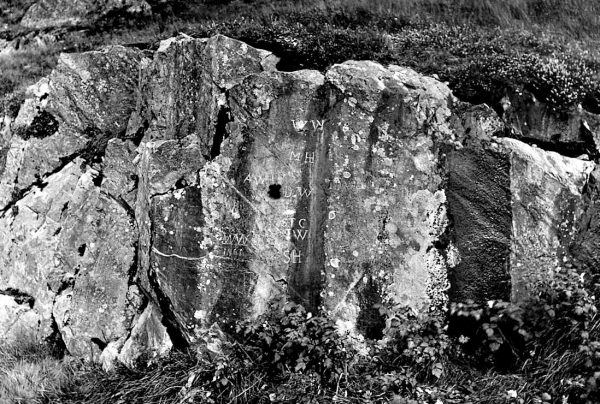
The deep friendship between William Wordsworth, his sister Dorothy, and S. T. Coleridge shaped many aspects of their lives. On one occasion, Coleridge carved their initials, as well as those of other close members of their circle, onto what would be later called the “Rock of Names,” a slab of stone at the side of the road between their Lake District homes. William immortalizes this action in his original manuscript of the poem “The Waggoner,” where he charges the stone to hold the memory of their bond long after they’ve all died:
“Rock of Names!
Light is the strain, but not unjust
To Thee, and thy memorial-trust
That once seemed only to express
Love that was love in idleness;
Tokens, as year hath followed year
How changed, alas, in character!
For they were graven on thy smooth breast
By hands of those my soul loved best;
Meek women, men as true and brave
as ever went to a hopeful grave:
Their hands and mine, when side by side
With kindred zeal and mutual pride,
We worked until the Initials took
Shapes that defied a scornful look—
Long as for us a genial feeling
Survives, or one in need of healing,
The power, dear Rock, around thee cast,
Thy monumental power, shall last
For me and mine! O thought of pain,
That would impair it or profane!
Take all in kindness then as said
with a staid heart but playful head;
And fail not thou, loved Rock! To keep
Thy charge when we are laid asleep.”
The Rock of Names was nearly destroyed during the construction of the Thirlmere Reservoir in the late 1800s, but its fragments, cemented together, can now be seen behind Dove Cottage in Grasmere.
Contributed by Emily Wright